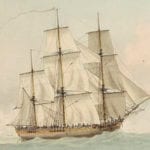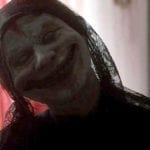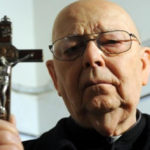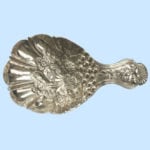 Mysteries
Mysteries  Mysteries
Mysteries  Music
Music 10 Musicians Who Changed How Everyone Plays Their Instruments
 Humans
Humans 10 Inventors Who Died Awful Deaths in Their Own Creations
 Animals
Animals 10 Ways Animals Use Deception to Survive
 Movies and TV
Movies and TV 10 Misdirections Directors Used to Manipulate Actors
 Politics
Politics The 10 Boldest Coup Attempts of the 21st Century
 Weird Stuff
Weird Stuff 10 Things That Would Have Killed You in the Old West
 Books
Books 10 Pen Names More Famous Than Their Authors
 Creepy
Creepy 10 Unnerving Legends from Around the World
 Movies and TV
Movies and TV 10 Amazing Lead Actor Ideas for Superhero Movies
 Mysteries
Mysteries 10 Bizarre, Little-Known Phenomena
 Music
Music 10 Musicians Who Changed How Everyone Plays Their Instruments
 Humans
Humans 10 Inventors Who Died Awful Deaths in Their Own Creations
Who's Behind Listverse?

Jamie Frater
Head Editor
Jamie founded Listverse due to an insatiable desire to share fascinating, obscure, and bizarre facts. He has been a guest speaker on numerous national radio and television stations and is a five time published author.
More About Us Animals
Animals 10 Ways Animals Use Deception to Survive
 Movies and TV
Movies and TV 10 Misdirections Directors Used to Manipulate Actors
 Politics
Politics The 10 Boldest Coup Attempts of the 21st Century
 Weird Stuff
Weird Stuff 10 Things That Would Have Killed You in the Old West
 Books
Books 10 Pen Names More Famous Than Their Authors
 Creepy
Creepy 10 Unnerving Legends from Around the World
 Movies and TV
Movies and TV 10 Amazing Lead Actor Ideas for Superhero Movies
10 Victorian Explorers Into The Paranormal
It is well-known that the Victorians were keen on science, engineering, and mad inventions. They had a morbid fascination with death, but they had a spiritual side, too. So it was only a matter of time before they became obsessed with spiritualism and the paranormal.
In doing so, they approached the unknown like any other scientific conundrum. They wrote up experiments, tried to attach philosophical treatises to their findings, and considered the illogical, the otherworldly, and the downright bizarre with inquiring and open minds.
Although, occasionally, they were also a bit nuts.
10 Maria Hayden

Maria Hayden was an American medium. In the mid-1800s, she became famous in England as the first medium to demonstrate the new art of rapping, shortly after the more famous Fox sisters had made such an “impression” (also known as a killing) back home.
It is probably fair to say that the media did not treat Hayden kindly. Several Victorian publications set out to ridicule her and her skills. This increased when it was revealed that her rapped-out messages only made sense when she was able to see the letters in front of her.[1]
When she was asked to turn her back, the messages were largely gibberish. This suggested the possibility that they were coming from Hayden herself and not from her spirit guide.
Hayden’s career as a medium seemed to end quite suddenly. She dropped out of the public eye completely and returned to America. There, she trained as a doctor and practiced for 15 years. It was said that she had “remarkable healing powers.” So good, in fact, that she was later offered a medical professorship at a US university.
9 Annie Horniman
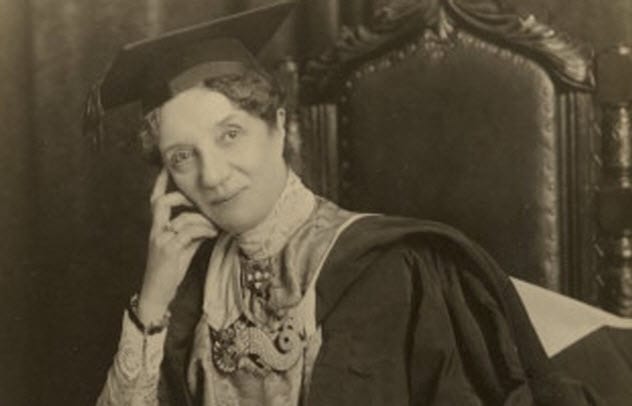
Annie Horniman’s background was rather ordinary. Her family had come up with the idea of selling tea prepackaged rather than loose, which was less messy and much more lucrative.
Like all wealthy Victorian ladies, Horniman had a social project. She was instrumental in creating the arts scene in Manchester, working to bring the theater to the masses. She promoted the work of local dramatists, the benefits of which are still felt today as Manchester has the most thriving theater district outside of London.
But a lady has to have a hobby, too. Horniman was a believer in tarot cards and mysticism in general. She used card readings in all her business affairs, though not always successfully.
Along with Aleister Crowley and Bram Stoker, Horniman became a member of The Hermetic Order of the Golden Dawn for the better understanding of the paranormal. She also believed that she could astrally project to other planets, which she visited as frequently as some people pop to the shops.
While on a tour of the universe in 1898, she encountered a “tall, dignified, and winged” man on Saturn. He was dressed in armor and told Horniman all about his “dying world.” However, the man was fearful of strangers. As a result, Horniman and her companion made themselves invisible so as not to alarm him.[2]
8 Annie Besant
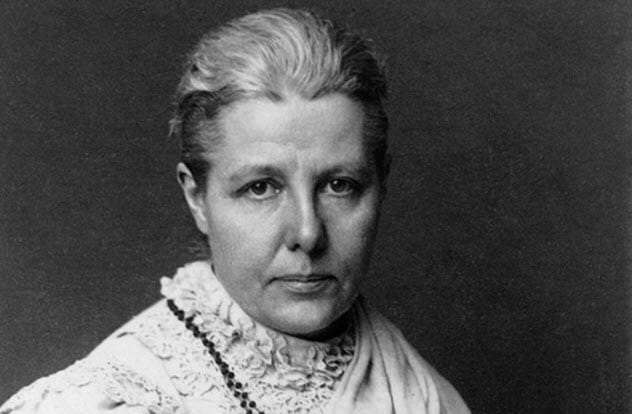
Annie Besant was a singular woman. She boldly left her clergyman husband and two children because of her anti-religious views and became involved with a former clergyman, Charles Leadbeater, who was a member of Madame Blavatsky’s Theosophical Society. Besant was much interested in spiritualism of all kinds, believing as she did that “matter exists in states other than those at present known to science.”
Besant wrote a book called Thought-Forms, which was not so much about the paranormal as it was about color. Today, Besant would have been diagnosed with synesthesia as her book explained emotion in a table of colors and shapes. The work gave a fascinating insight into the synesthete’s mind. Apparently, passion is purple.
Later, Besant became an advocate for Indian Home Rule. She eventually settled there and adopted a son whom she believed to be the new Messiah and a reincarnation of Buddha.[3]
7 Helena Petrovna Blavatsky
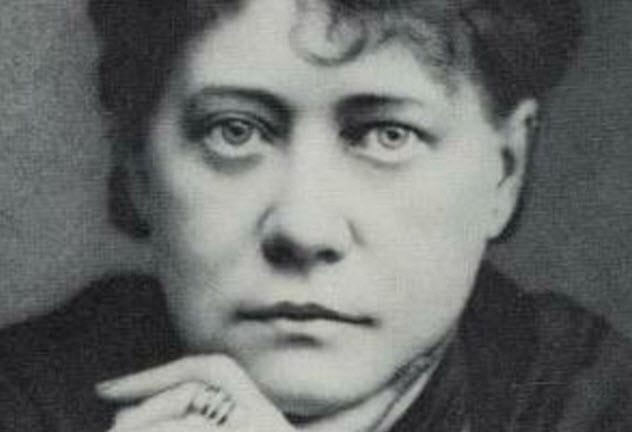
In 1873, Helena Blavatsky arrived in New York from Russia. She was a philosopher, a student of the occult, and one of the founding members of the Theosophical Society. The aim of the society was to explore the divine powers she believed that humans possessed and thus save the world.
Blavatsky’s particular divine powers included visions, clairvoyance, and conversing with the dead. She claimed that she had disguised herself as a man to fight in the Battle of Mentana, where she was left for dead. But she supposedly used her powers to fight her way back to life. After that, she made a miraculous escape at sea after her ship was blown up.
However, her account lacked proof or credibility. She could not adequately explain why she, a Russian living in America, would want to involve herself in an Italian-French conflict in Rome. Soon, she let this story go.
Blavatsky’s biggest claim to fame was her book, The Secret Doctrine, which explained the birth of mankind from the four Root Races. The first (best) race was as white as the Moon, the second was gold, the third was red, and the fourth was brown which became “black with sin.”[4]
6 Alexis-Vincent-Charles Berbiguier De Terre-Neuve Du Thym
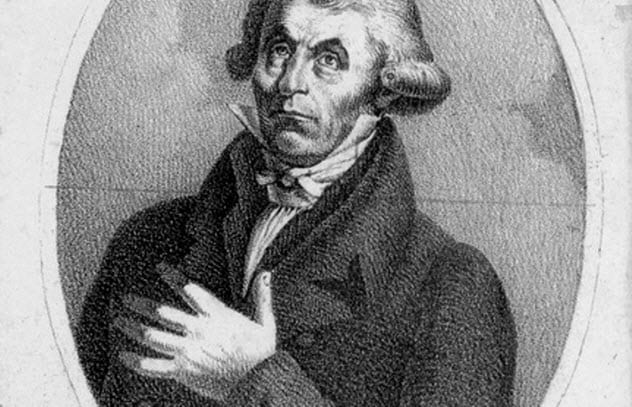
Alexis-Vincent-Charles Berbiguier de Terre-Neuve du Thym, whom we will call Berbiguier, was born in France in 1765. It is probably fair to say that he was “troubled.”
In 1821, he published his autobiography in three volumes. It detailed his struggles with dark forces, which had earned him the title “The Scourge of Hobgoblins.” According to Berbiguier, he had destroyed as many of these creatures as possible but had discovered that killing them makes them angry.
Berbiguier refused to be examined for possible mental health disorders, believing all doctors to be ambassadors of the hobgoblin world. He increased his efforts to wipe out the plague of hobgoblins, filling his room with plants supposedly lethal to them as well as some empty bottles in which to trap them.[5]
Berbiguier published his volumes, all 274 chapters of them, which included pictures of the hobgoblins as drawn by him.
5 William Stead
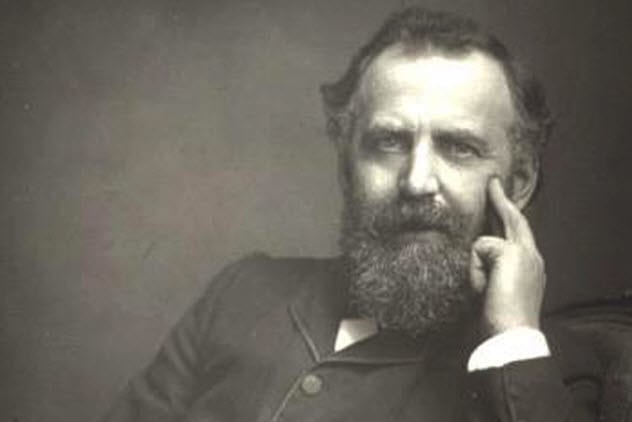
William Stead’s main claim to fame was that he had been aboard the Titanic when it sank. Still, he was an interesting man in other ways. He had been a pioneer of what is now called investigative journalism, writing an expose on child prostitution that ultimately led to the age of consent for girls being raised from 13 to 16.
In 1892, Stead began to report on a different kind of story. He had been getting messages from “the other side.” In fact, he believed that he was receiving messages from a departed fellow journalist. He even employed a team of office staff to record the messages and pass them on to relevant loved ones.
Whether Stead was really getting messages from the dead, we will never know. However, it seems that Stead may have had something of a seer in him because he wrote a short story in 1886 about a ship that sank in the Atlantic.
In the story, the loss of life was so great because the lifeboats could only carry a third of the souls on the ship, leaving many to perish. He also included a warning: Although the story was fictional, it was entirely plausible.
William Stead was not one of the lucky ones who made it onto the boats when the Titanic sank.[6]
4 William Wynn Westcott
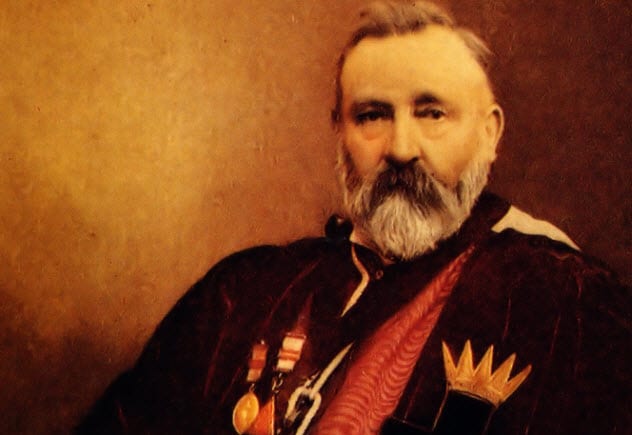
William Wynn Westcott was a doctor, Freemason, and occultist. He also worked as a coroner. He was even briefly considered a suspect in the Jack the Ripper case.
In 1887, Westcott claimed that he was given some mysterious documents by a man who promptly died. It was written in a secret code to which Westcott just happened to hold the key.
When decoded, the documents contained the instructions for an initiation ceremony, following which Westcott was “given permission” to found the Isis-Urania Temple of the Golden Dawn.
Westcott’s society took off, and several more temples were built. He was promoted to Praemonstrator of the Kabbalah. However, it seems that Westcott had upset some higher power. He left some of his papers in the back of a taxi one day, and his spare time activities came to the notice of his employers, who took a dim view of coroners being praemonstrators.[7]
Forced to choose between the secular and the divine, Westcott chose the one that allowed him to pay his bills and resigned from the society.
3 Dr. Hippolyte Leon Denizard Rivail
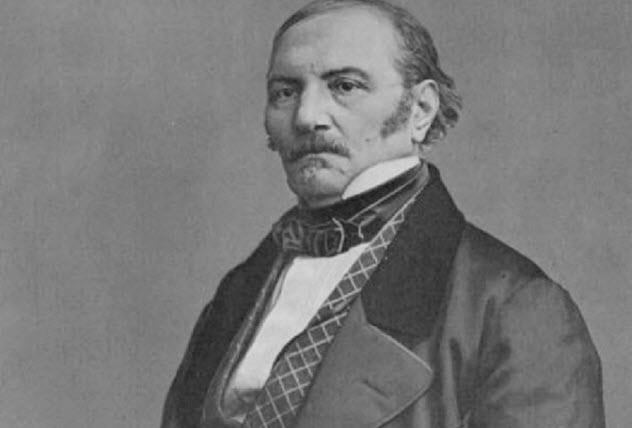
Dr. Rivail was a teacher, doctor, translator, and lawyer. Then he became Allan Kardec, “teacher of souls.” Kardec developed his own brand of spiritualism, which he called “Spiritism.”
After seeing a display of “table turning” in which the “spirit” causes a table to spin, he became convinced that the spirit was trying to communicate. However, three years earlier, Michael Faraday had explained the phenomenon of ideomotor response, in which muscles can move independently of deliberate thought and thus move tables.
Even so, Kardac wrote The Spirits Book, a guide to communicating with the other side. He believed that our bodies are just temporary containers for the spirit. In addition, the spirits of the departed are always with us, being reborn at different points along the ladder of spiritual rank.[8]
2 Daniel Dunglas Home

Daniel Dunglas Home believed himself to be exceptional. On developing an interest in spiritualism as a teenager, he decided not to follow the crowd. He held his seances in brightly lit rooms. Rather than the audience holding each other’s hands, he asked them to hold his hands to prove that he was not manipulating objects himself.
At first, his seances were fairly pedestrian—with messages from the dead and ghostly music emanating from nowhere. Then, around 1857, they began to get more interesting. He made spectral hands appear from the ether. Napoleon III’s wife was even said to have recognized the distinctive hand of her dead father because of a deformed finger.
By 1868, he was able to levitate—not just a few feet off the ground but through an open window three stories up. (Or rather, he went into another room by himself and was later seen outside the window, presumably due to levitation. Then he floated back in.)
Though all of this may seem inexplicable and impressive, Harry Houdini maintained that Home was merely a magician and that Houdini could replicate all of Home’s tricks. Nevertheless, Home was a celebrity of his time and had many wealthy admirers.
There was a certain amount of unpleasantness when a rich widow claimed that Home had swindled her. He responded that she had given him money for his “spiritualistic services” and only demanded a refund when she realized that he would not be performing services of a different kind. A trial ensued, and he was forced to reimburse her.[9]
1 Philippe Nizier-Anthelme Vachod
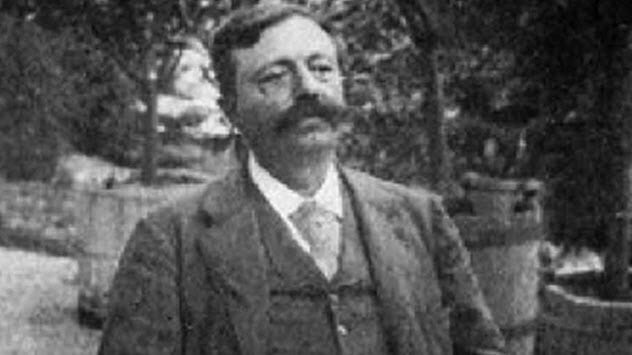
Philippe Nizier-Anthelme Vachod (or his less formal name, Master Philippe de Lyon) was born in France in 1849. Apparently, he was marked for greatness from the moment of his birth. His mother was said to have experienced no labor pains and delivered him singing with joy. As if that weren’t enough, a raging storm was quieted and a shooting star appeared at the exact moment of his birth.
So, how did this greatness manifest itself?
Well, in 1874, while living in Lyon, Philippe worked in a pharmacy and was able to cure the sick without the aid of drugs. Then he studied medicine. But his fellow students were unimpressed by his healing powers, which they felt made a mockery of their profession, and his license was revoked.[10]
He became the personal clairvoyant to Tsar Nicholas II and was said to have predicted the birth of the tsarevitch as well as the forthcoming revolution. Philippe even managed to raise a child from the dead.
However, he was unable to repeat the trick when his own child died. When asked to explain this, Philippe said that he had allowed her to die to save the world from an unspecified and unprovable cosmic calamity.
Ward Hazell is a writer who travels and an occasional travel writer.
Read about more bizarre paranormal events connected to history on 10 Bizarre Paranormal Encounters From Old Europe and 10 Paranormal Legends Connected To The US Civil War.

